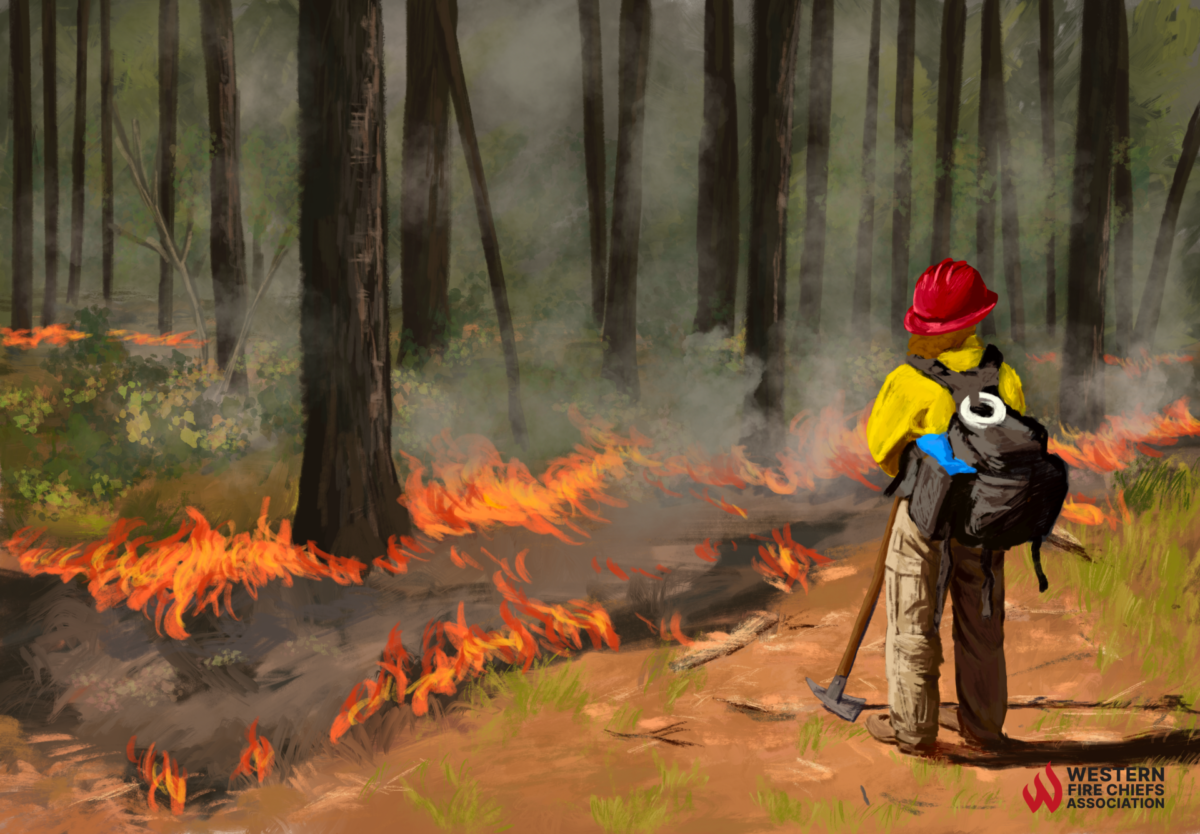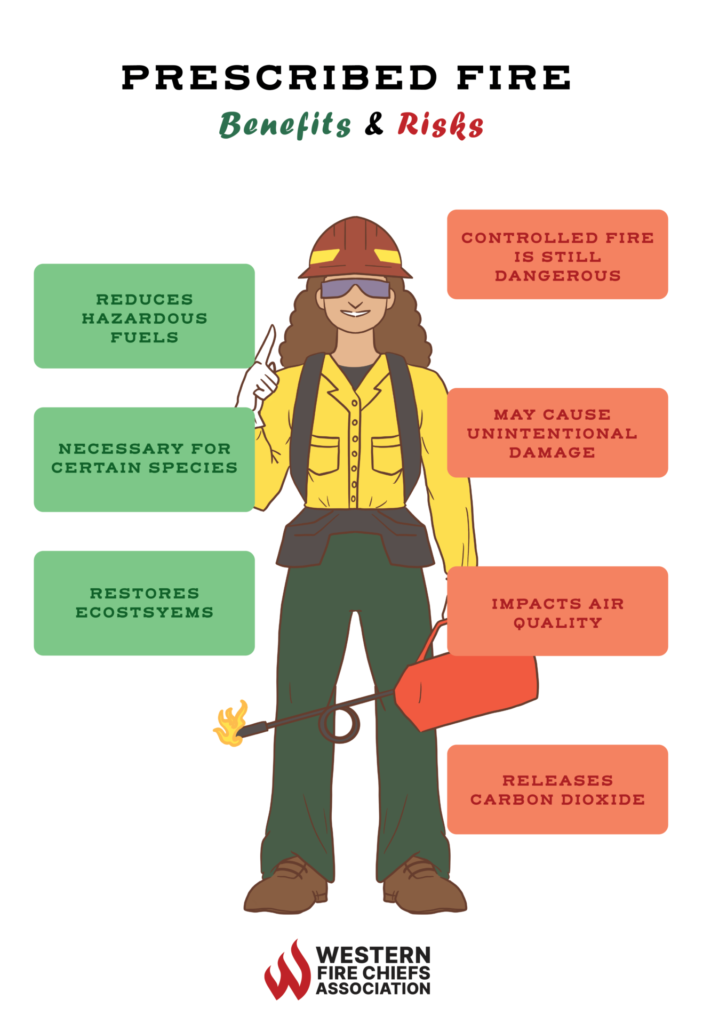Fire Pit Safety Tips
Stay safe around the campfire with tips from the Western Fire Chiefs Association. Learn essential precautions and practices for a worry-free outdoor campfire.
Learn about the pros and cons of prescribed fire, one of the most important tools to manage wildfire risk, with guidance from the Western Fire Chiefs Association (WFCA).
Published:July 25, 2022
Edited:March 4, 2024

Learn about the pros and cons of prescribed fire, one of the most important tools to manage wildfire risk, with guidance from the Western Fire Chiefs Association (WFCA).
A prescribed fire, otherwise known as a “controlled burn” or “prescribed burn”, is a fire that is lit intentionally by local authorities after careful planning, and by going through the proper channels. Prescribed fires are applied in controlled conditions in order to meet land management objectives.
Key objectives of controlled burns include minimizing extreme wildfire risk and maintaining the health of certain ecosystems.
Creating a burn plan involves identifying the best conditions for the prescribed fire. Temperature, humidity, wind, and moisture are just a few of the considerations that prescribed fire specialists take into account before deciding whether to burn on a given day.
Prescribed burning is not a new practice. Indigenous peoples have used fire as an effective form of land management for centuries!
Controlled burns can safely reduce overgrown trees, brush and vegetation that provide fuel for wildfires. Reducing fuel loads minimizes the risk of more dangerous fires, and helps to protect communities from potentially catastrophic damage.
Certain species depend on fire during their life cycle. For example, the Giant Sequoia requires fire to open its cones for seed dispersal once they are on the ground.1 Therefore, fire plays an important role in maintaining certain ecosystems.
Over time, a forest floor can become choked with undergrowth. Without fire to address the overgrown conditions, new and existing plants face stiff competition for light, water, and nutrients.
A cluttered understory limits biological activity and provides fewer options for food and shelter for animal populations as well. Controlled burns de-clutter overgrown plants, reducing stress on well-established trees and making way for new plants to grow.2
Prescribed fires can also help to reduce destructive insect populations, clear out diseased vegetation, and destroy invasive plants, providing an overall improvement to habitat conditions.

Despite controlled burns always being planned and carried out by specialists, there are still associated risks. Unexpected weather conditions can make even the best-prescribed fire plans go awry, causing the fire to burn beyond the prescribed area, potentially threatening lives and property.
In general, animal casualties from wildfires are low, as they have a natural instinct to flee from danger. However, a poorly timed fire can affect certain species, such as ground-nesting birds.3 Proper seasonal considerations can mitigate these impacts.
Controlled burns produce smoke that can be harmful to the health of local communities. Inhaling smoke can cause long and short-term respiratory problems like asthma and pneumonia. Prescribed fire specialists can mitigate this risk by scheduling burns on days when the wind will clear the smoke quickly.
When organic matter burns, it releases stored carbon back into the air. Carbon dioxide, which is a result of burning carbon-based fuels, is an effective greenhouse gas and one of the biggest contributors to global warming.
To stay informed about prescribed fires in your area, get in touch with your local fire department. For information about active burns in the United States, visit the Western Fire Chiefs Association Fire Map.
Stay safe around the campfire with tips from the Western Fire Chiefs Association. Learn essential precautions and practices for a worry-free outdoor campfire.
Discover essential firework safety tips to ensure a dazzling display without accidents. Learn how to celebrate responsibly with expert guidance from WFCA.
Explore the role of AI in wildfire prediction with guidance from the WFCA. Learn how advanced algorithms and data analytics enhance early detection and response.